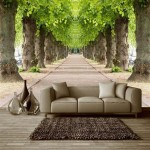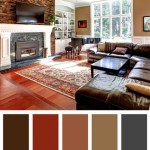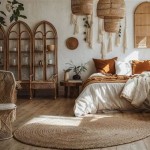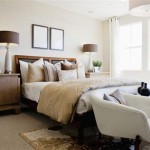```html
How to Decorate Your Room: Using Quizzes to Find Your Style
Decorating a room can be a daunting task for many individuals. The process involves considering various aspects, including personal preferences, spatial limitations, budget constraints, and the overall desired atmosphere. Navigating these factors to create a cohesive and aesthetically pleasing space can be challenging. Many online resources are available to assist with this process, and one popular method is utilizing online quizzes. These quizzes, often found on platforms like Buzzfeed, are designed to provide personalized recommendations based on user input.
The appeal of these "How Should I Decorate My Room?" quizzes lies in their accessibility and ease of use. They typically present a series of questions with multiple-choice answers that cover a range of topics related to interior design. These topics might include preferred colors, furniture styles, activities the room will be used for, and overall aesthetic preferences. The answers provided are then algorithmically processed to generate a profile of potential decorating styles that align with the user's indicated tastes.
While these quizzes can offer a helpful starting point, it is crucial to understand their limitations. They should be viewed as a source of inspiration rather than a definitive guide. A successful room decoration relies on a more comprehensive approach that incorporates practical considerations and a detailed understanding of design principles.
Assessing Your Functional Needs and Spatial Constraints
Before engaging with any decorating quiz, it is essential to conduct a thorough assessment of the room's intended function and the constraints imposed by its physical dimensions. Consideration should be given to the primary activities that will take place in the room. For example, is the room intended primarily for sleeping, studying, working, entertaining, or a combination of these? The answer to this question will significantly influence the choice of furniture, lighting, and overall layout. A room designed for studying will require ample desk space and task lighting, while a room intended for relaxation might prioritize comfortable seating and ambient lighting.
Spatial constraints also play a crucial role. The size and shape of the room will dictate the scale of furniture that can be accommodated and influence the flow of movement within the space. A small room will benefit from minimalist designs and light colors to create a sense of openness, while a larger room can handle bolder choices and more substantial furniture pieces. Careful measurements should be taken to ensure that furniture fits comfortably without overcrowding the room.
Furthermore, existing architectural features, such as windows, doors, and built-in storage, should be taken into consideration. These features can be integrated into the overall design scheme, maximizing their functionality and aesthetic appeal. For example, a large window can be highlighted with sheer curtains to allow natural light to filter through, while a built-in bookcase can be used to display decorative items and create a focal point.
Understanding Basic Design Principles
An understanding of basic design principles is crucial for creating a visually appealing and harmonious room. These principles include balance, proportion, harmony, emphasis, and rhythm. Balance refers to the distribution of visual weight within the space, ensuring that no one area feels too heavy or dominant. This can be achieved through symmetrical or asymmetrical arrangements of furniture and accessories.
Proportion relates to the relationship between the sizes of different objects within the room. Objects should be scaled appropriately to their surroundings, avoiding extreme contrasts that can disrupt visual harmony. For example, a too-small rug in a large room can make the space feel unfinished, while an oversized piece of furniture in a small room can feel overwhelming.
Harmony is achieved when all the elements of the room work together to create a cohesive and unified whole. This involves selecting colors, textures, and patterns that complement each other and contribute to the overall aesthetic. Emphasis refers to creating a focal point within the room that draws the eye and establishes a visual hierarchy. This can be achieved through a striking piece of art, a statement rug, or a strategically placed piece of furniture.
Rhythm is created through the repetition and variation of elements within the room, such as colors, patterns, and textures. This helps to create a sense of movement and visual interest, preventing the space from feeling static or monotonous. By applying these design principles, individuals can create a room that is both aesthetically pleasing and functionally sound.
Integrating Quiz Results with Personal Preferences and Practical Considerations
Once a decorating quiz has been completed, and potential style recommendations have been generated, it is important to critically evaluate the results and integrate them with personal preferences and practical considerations. The quiz results should be viewed as a starting point for inspiration, not as a rigid set of guidelines to be followed blindly.
Consider the specific elements of the suggested styles that resonate most strongly with personal taste. Are there particular colors, patterns, or furniture styles that appeal to the individual? These elements can be incorporated into the design scheme, while other aspects that are less appealing can be discarded or modified.
It is also important to consider how the suggested styles align with the room's intended function and the individual's lifestyle. For example, a minimalist style might be ideal for a small, uncluttered room, but it may not be practical for someone who needs ample storage space or prefers a more lived-in aesthetic. A bohemian style might be appealing, but it may not be suitable for someone who prefers a more structured and organized environment.
Budget constraints should also be taken into account. Some decorating styles can be more expensive to implement than others. It is important to prioritize purchases based on their impact on the overall design and to explore affordable alternatives where possible. For example, instead of purchasing expensive artwork, consider creating DIY art or framing prints. Instead of buying new furniture, consider repurposing existing pieces or shopping at thrift stores.
Ultimately, the goal is to create a room that reflects the individual's unique personality and meets their practical needs. This requires a thoughtful and iterative process that involves experimentation, adaptation, and a willingness to deviate from the quiz results when necessary. Successful room decoration is about creating a space that is both beautiful and functional, and that feels like a true reflection of the individual who inhabits it.
```
Design Bedroom Get Perfect Aesthetic Quiz

Bedroom Design Mental Age Quiz

Design Bedroom To Reveal Most Polarizing Quality Quiz

Design Bedroom Color That Matches Personality Quiz

What Is Your Interior Design Style

Design Bedroom Get Perfect Aesthetic Quiz

What S Your Home Style Aesthetic

Choose Some Home Decor To Reveal Your Best Quality Quiz

Decor Aesthetic Style Quiz

Decorate A Bedroom And We Ll Tell You What Type Of Furniture Are







